Watercolor Tutorial by Mat Barber Kennedy
“I think the life of a city, of a culture, of a family or a business, is revealed in the ways that our structures age,” says Mat Barber Kennedy. Here’s a look at how he achieves that look in his watercolor paintings.
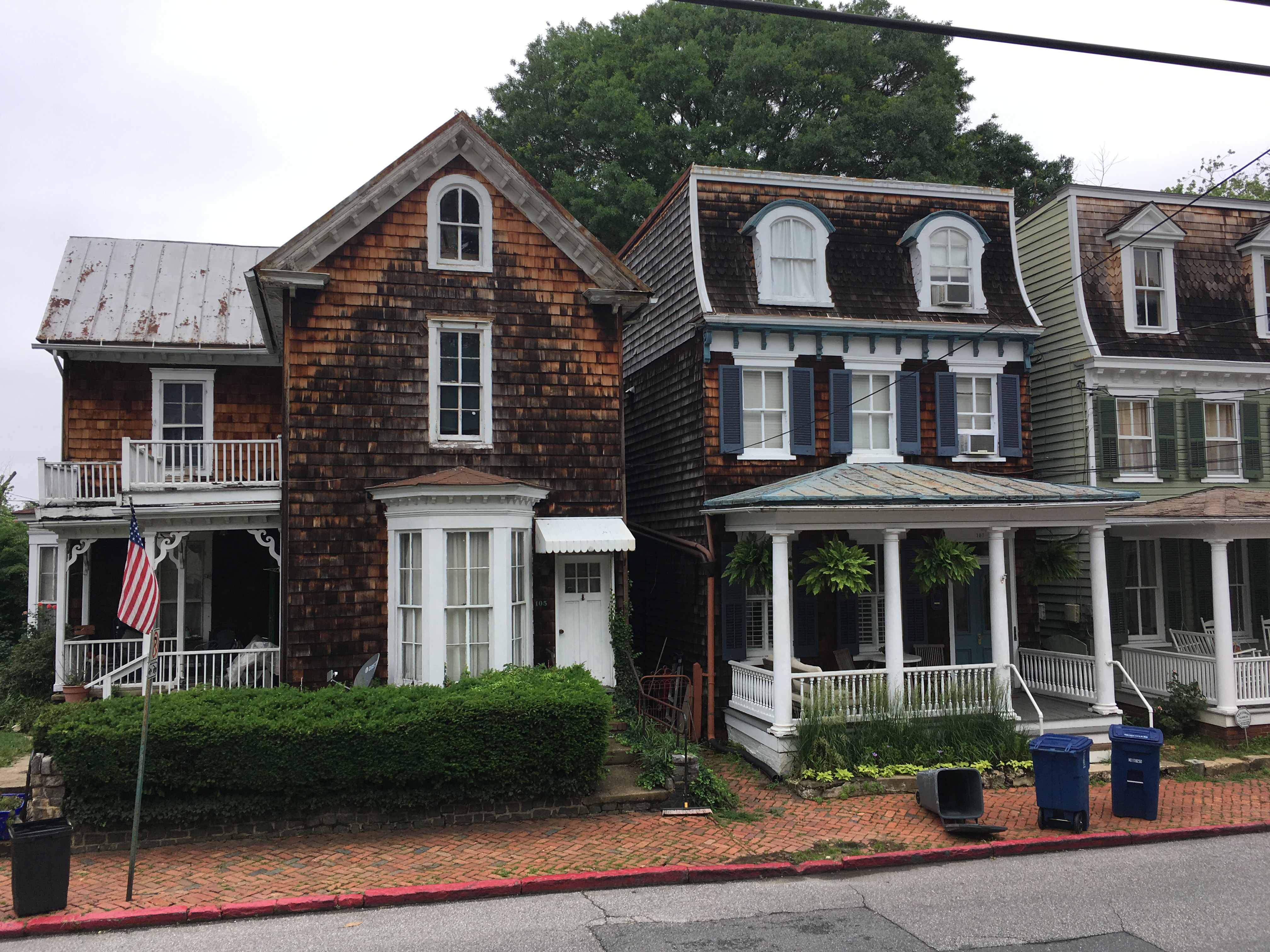
View of Conduit Street, Annapolis
“This stretch of Conduit Street seemed to me to be both specifically Annapolis and inconsistent in its vocabulary,” Kennedy says of the subject of the first painting he made during his first visit to the Maryland town, which he felt was a “stitching together” of disparate styles and tastes from the 18th and 19th centuries. “It was my beginning of understanding the local architecture,” he says.
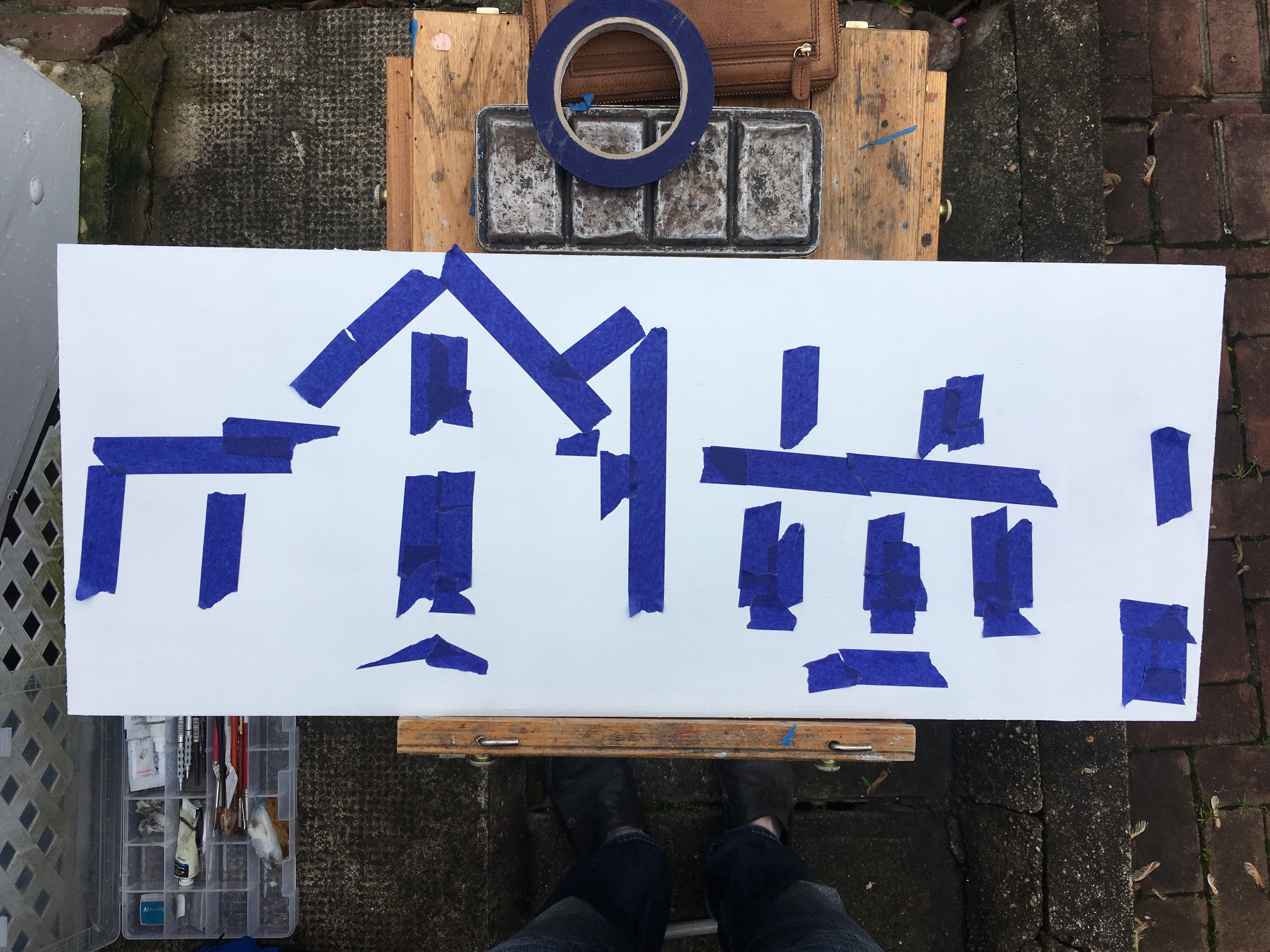
Step 1
“So much of my work involves the presence of the white of the surface,” says Kennedy. “Sometimes there is a need for a long, careful drawing at the outset, though that isn’t my typical process. One of the ways that I like to ‘draw’ is to lay out my compositional structure in masking tape. I use a low-tack artist’s tape and expect some bleeding to occur, which I will turn to my advantage.”
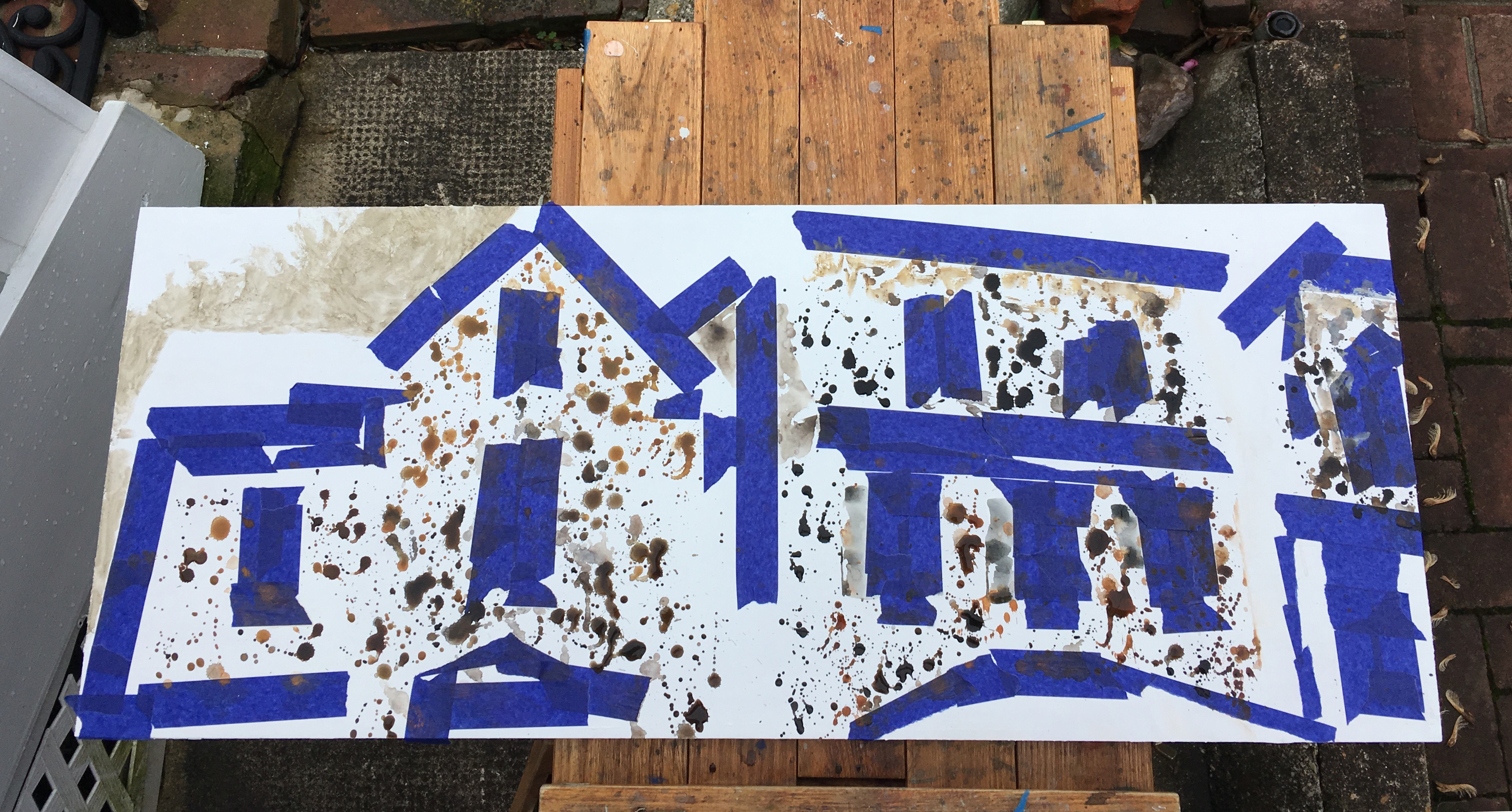
Step 2
“With the major edges ‘drawn’ with tape, I can begin to build my textures and body color without being too precious about details,” says Kennedy. “This stage is very splashy and quick. There’s often a coffee break while the underpainting dries.”
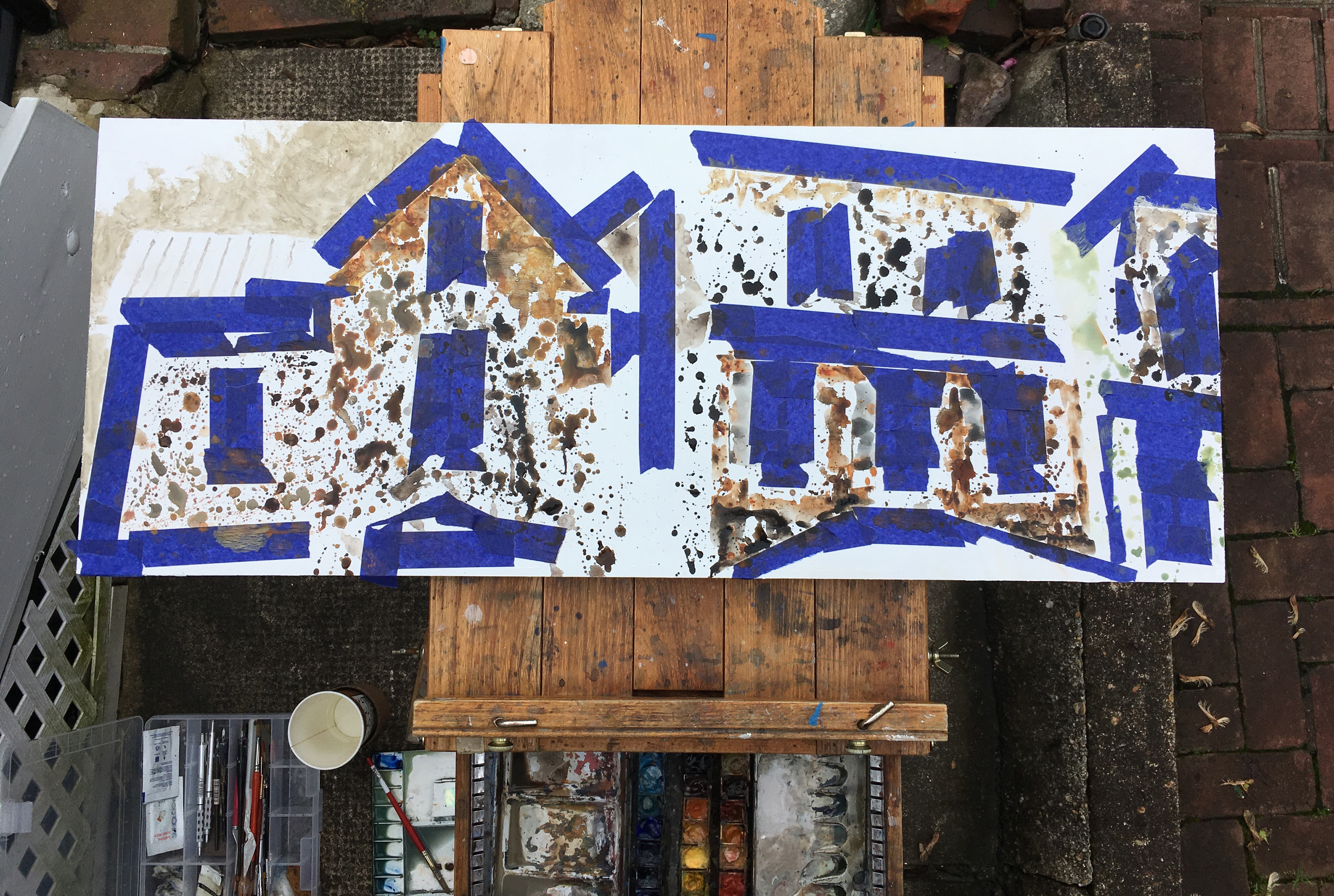
Step 3
“As I begin to build more intensity into the textured washes, I start to define edges and create shapes,” Kennedy says. “Still splashing, but beginning to draw with the brush wet-into-wet, I pull drops into lines and blocks, allowing colors to run into each other.”

Step 4
“With the tape removed, the painting has the major masses laid in and the defining of the specifics can begin,” says Kennedy. The first steps may have been completed in little more than an hour, but the development of all the details will take two or three more. “Notice the texture of the bleeding that has occurred, particularly in the central, rectangular window of the building on the left,” says the artist. “Some of those marks will become the weathered woodwork of the window frame, and the dark window itself will allow me to lose the rest.”
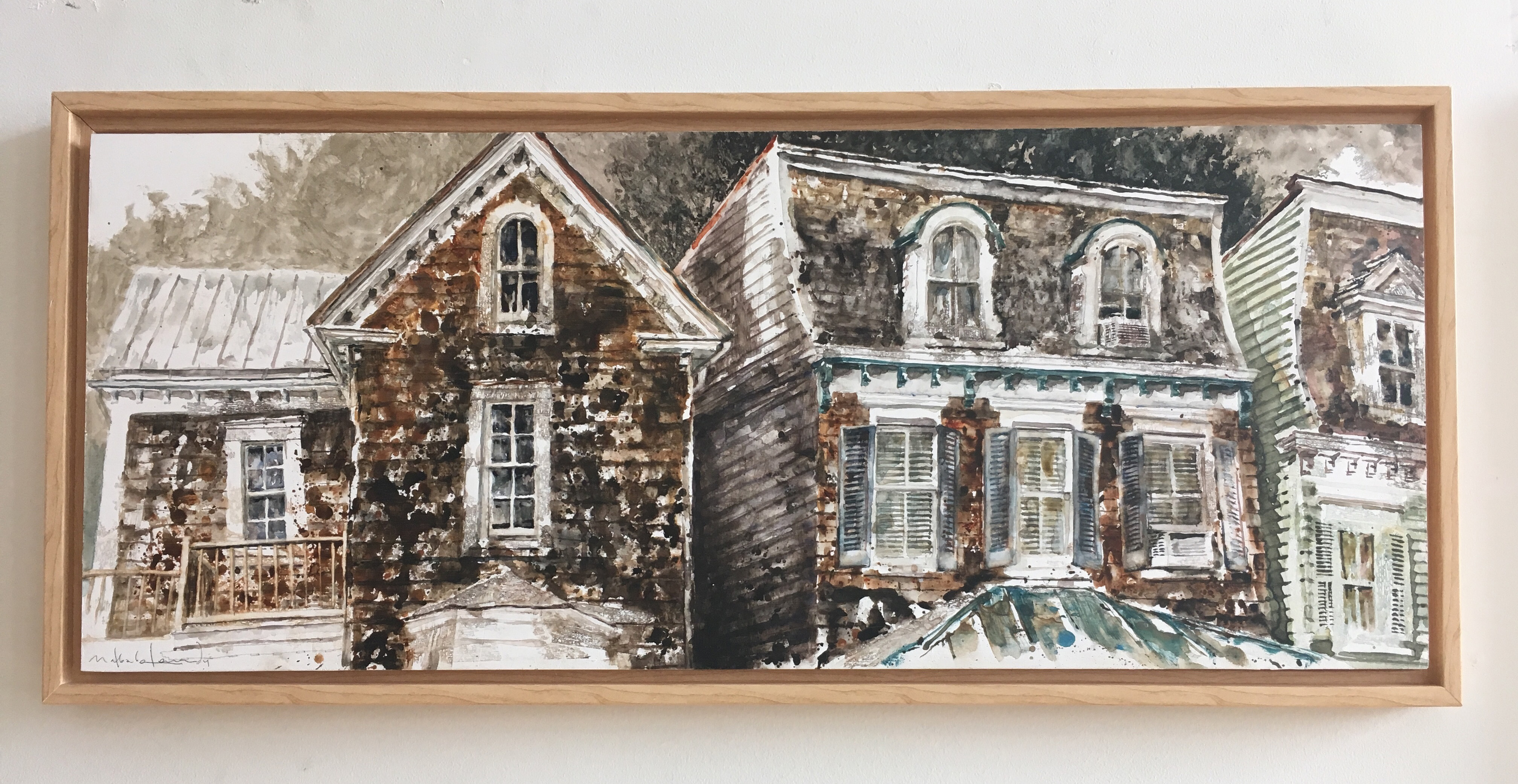
Final Step
“As the painting emerges I am constantly moving across it, bringing elements up together, not finishing anything until I have finished everything,” Kennedy says. “My paintings all work this way, from the general to the specific, building the whole composition at once rather than working piece by piece. It’s how I draw the figure and it’s how I draw a bucket, building the entire composition, finally getting to the darkest darks and the tightest linear details.”








Crazy fun. removes the fear of mistaken brush strokes.
Totally fascinated by Mr Kennedy’s technique. I love Annapolis. Seem Mr Kennedy has captured the essence of the town
[…] a step-by-step demonstration of his watercolor […]